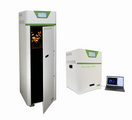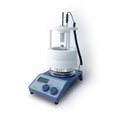MC 1000 8通道藻类培养与在线监测系统文献列表
(2020年-2022年2月)
1.Jia M,et al. 2022.The bHLH family NITROGEN-REPLETION INSENSITIVE1 represses nitrogen starvation-induced responses in Chlamydomonas reinhardtii. The Plant Journal. doi: 10.1111/tpj.15673.
2.Széles E, et al. 2022. Microfluidic Platforms Designed for Morphological and Photosynthetic Investigations of Chlamydomonas reinhardtiion a Single-Cell Level. Cells 11(2):285.
3.Pessi BA, et al. 2022. Does temperature shift justify microalgae production under greenhouse? Algal Research 61: 102579.
4.Ben-SA, Vonshak A. 2022. Tolerance to exogenously added ROS examined for correlation with enhanced specific growth rates of Arthrospira platensis. Journal of Applied Phycology. doi: 10.1007/s10811-022-02688-0.
5.Fettah N,et al. 2022. Effect of light on growth of green microalgae Scenedesmus quadricauda: influence of light intensity, light wavelength and photoperiods. International Journal of Energy and Environmental Engineering. doi:10.1007/s40095-021-00456-3.
6.Admirasari R, et al. 2022. Nutritive capability of anaerobically digested black water increases productivity of Tetradesmus obliquus: Domestic wastewater as an alternative nutrient resource. Bioresource Technology Reports 17: 100905.
7.Dann M, et al. 2021. Enhancing photosynthesis at high light levels by adaptive laboratory evolution. Nature Plants 7: 681–695.
8.Huokko T, et al. 2021. Probing the biogenesis pathway and dynamics of thylakoid membranes. Nature Communications 12: 3475.
9.Lin JY, Ng IS. 2021. Production, isolation and characterization of C-phycocyanin from a new halo-tolerant Cyanobacterium aponinum using seawater. Bioresource technology 342: 125946.
10.Kona R, et al. 2021. Lutein and β-carotene biosynthesis in Scenedesmussp. SVMIICT1 through differential light intensities. Bioresource technology 341:125814.
11.Shabestary K, et al. 2021. Cycling between growth and production phases increases cyanobacteria bioproduction of lactate. Metabolic engineering 68: 131-141.
12.Spät P, et al. 2021. Alterations in the CO2availability induce alterations in the phosphoproteome of the cyanobacterium Synechocystissp. PCC 6803. New Phytologist 231: 1123-1137.
13.Billey E,et al. 2021. Characterization of the Bubblegum acyl-CoA synthetase of Microchloropsis gaditana. Plant Physiology 185(3): 815-835.
14.Bandyopadhyay A, et al. 2021. Antenna Modification Leads to Enhanced Nitrogenase Activity in a High Light-Tolerant Cyanobacterium. Mbio 12(6): e03408-21.
15.Chen H, et al. 2021. A Novel Mode of Photoprotection Mediated by a Cysteine Residue in the Chlorophyll Protein IsiA. mBio 12(1).
16.Liu X, et al. 2021. Chlorophyll fluorescence as a light signal enhances iron uptake by the marine diatom Phaeodactylum tricornutumunder high-cell density conditions. BMC biology 19(1): 1-15.
17.Cecchin M, et al. 2021. CO2supply modulates lipid remodelling, photosynthetic and respiratory activities in Chlorellaspecies. Plant, Cell & Environment 18(2): 431842.
18.Lin JY, et al. 2021. High-level production and extraction of C-phycocyanin from cyanobacteria Synechococcussp. PCC7002 for antioxidation, antibacterial and lead adsorption. Environmental Research 206: 112283.
19.Battaglino B, et al. 2021. Channeling Anabolic Side Products toward the Production of Nonessential Metabolites: Stable Malate Production in Synechocystissp. PCC6803. ACS Synthetic Biology 10(12): 3518-3526.
20.Ben SA, et al. 2021. Characterization of nannochloropsisoceanicarose bengal mutants sheds light on acclimation mechanisms to high light when grown in low temperature. Plant and Cell Physiology 62(9): 1478-1493.
21.Gachelin M, et al. 2021. Enhancing PUFA-rich polar lipids in Tisochrysis luteausing adaptive laboratory evolution (ALE) with oscillating thermal stress. Applied Microbiology and Biotechnology 105: 301-312.
22.Pivato M, et al. 2021. Heterologous expression of cyanobacterial Orange Carotenoid Protein (OCP2) as a soluble carrier of ketocarotenoids in Chlamydomonas reinhardtii. Algal Research 55(16):102255.
23.Busnel A, et al. 2021. Development and validation of a screening system for characterizing and modeling biomass production from cyanobacteria and microalgae: Application to Arthrospira platensisand Haematococcus pluvialis. Algal Research 58: 102386.
24.Guljamow A, et al. 2021. Diel Variations of Extracellular Microcystin Influence the Subcellular Dynamics of RubisCO in Microcystis aeruginosaPCC 7806. Microorganisms 9(6): 1265.
25.Barera S, et al. 2021. Effect of lhcsrgene dosage on oxidative stress and light use efficiency by Chlamydomonas reinhardtiicultures. Journal of Biotechnology 328: 0168-1656.
26.Canizales S, et al. 2021. Cyanobacterial growth and cyanophycin production with urea and ammonium as nitrogen source. Journal of Applied Phycology 33 (6): 3565-3577.
27.Dixit RB, et al. 2021. Secretomics:A Possible Biochemical Foot Printing Tool in Developing Microalgal Cultivation Strategies.World Journal of Microbiology and Biotechnology 37(11):1-11.
28.Zhao L, et al. 2020. Structural variability, coordination and adaptation of a native photosynthetic machinery. Nature Plants 6(7): 869–882.
29.Yao L,et al.. 2020. Pooled CRISPRi screening of the cyanobacterium Synechocystissp PCC 6803 for enhanced industrial phenotypes. Nature Communications 11(1): 1666.
30.Lfb A, et al. 2020. Metabolic engineering of Synechocystissp. PCC 6803 for the production of aromatic amino acids and derived phenylpropanoids. Metabolic Engineering 57:129-139.
31.Perozeni F, et al. 2020. Turning a green alga red: engineering astaxanthin biosynthesis by intragenic pseudogene revival in Chlamydomonas reinhardtii. Plant Biotechnology Journal 18(10) : 2053-2067.
32.Shrameeta S, et al. 2020. Glycogen Metabolism Supports Photosynthesis Start through the Oxidative Pentose Phosphate Pathway in Cyanobacteria1. Plant Physiology 182(1):507-517.
33.Flamholz AI,et al. 2020. Functional reconstitution of a bacterial CO2concentrating mechanism in Escherichia coli. eLife9: e59882.
34.Iasimone F, et al. 2020. Bioflocculation and settling studies of native wastewater filamentous cyanobacteria using different cultivation systems for a low-cost and easy to control harvesting process. Journal of Environmental Management 256(15): 109957.
35.Wu W, et al. 2020. Using osmotic stress to stabilize mannitol production in Synechocystissp. PCC6803. Biotechnology for Biofuels 13(1) : 879-891.
36.Cecchin M, et al. 2020. Improved lipid productivity in Nannochloropsisgaditana in nitrogen-replete conditions by selection of pale green mutants. Biotechnology for Biofuels 13(1): 1-14.
37.Nzayisenga, JC,et al. 2020. Effects of light intensity on growth and lipid production in microalgae grown in wastewater. Biotechnology for Biofuels 13(284): 1179-1184.
38.Gupta JK, et al. 2020. Overexpression of bicarbonate transporters in the marine cyanobacterium Synechococcussp. PCC 7002 increases growth rate and glycogen accumulation. Biotechnology for Biofuels 13(1): 1-12..
39.Sengupta S, et al. 2020. Metabolic engineering of a fast-growing cyanobacteriumSynechococcuselongatus PCC11801 for photoautotrophic production of succinic acid. Biotechnology for Biofuels 13(1): 539-554.
40.Kareya MS, et al. 2020. Photosynthetic Carbon Partitioning and Metabolic Regulation in Response to Very-Low and High CO2in Microchloropsis gaditanaNIES 2587. Frontiers in Plant Science 11: 981.
41.Alvarenga D, et al. 2020. AcnSP – A Novel Small Protein Regulator of Aconitase Activity in the Cyanobacterium Synechocystissp. PCC 6803. Frontiers in Microbiology 11: 1445.
42.Minhas AK, et al.2020. Microalga Scenedesmus bijugus: Biomass, lipid profile, and carotenoids production in vitro. Biomass and Bioenergy 142: 105749.
43.Alessandra B,et al. 2020. Photosynthesis Regulation in Response to Fluctuating Light in the Secondary Endosymbiont Alga Nannochloropsis gaditana. Plant & Cell Physiology 61(1): 41-52.
44.Ahmad A, et al. 2020. Biochemical Characteristics and a Genome-Scale Metabolic Model of an Indian Euryhaline Cyanobacterium with High Polyglucan Content. Metabolites10(5):177.
45.Sengupta A, et al. 2020. Photosynthetic Co-Production of Succinate and Ethylene in A Fast
-Growing Cyanobacterium, Synechococcus elongatusPCC 11801. Metabolites 10(6): 250.
46.Munz J, et al. 2020. Arginine-fed cultures generates triacylglycerol by triggering nitrogen starvation responses during robust growth in Chlamydomonas. Algal Research 46: 101782.
47.Weiner I, et al. 2020. CSO -A sequence optimization software for engineering chloroplast expression in Chlamydomonas reinhardtii. Algal Research 46: 101788.
48.Zhang B, et al. 2020. The carbonate concentration mechanism of Pyropia yezoensis(Rhodophyta): evidence from transcriptomics and biochemical data. BMC Plant Biology 20(1): 424.
49.Li YX,et al. 2020. Transcriptome analysis of carotenoid biosynthesis in Dunaliella salinaunder red and blue light. Journal of Oceanology and Limnology 38(1):177-185.
50.Dienst D,et al. (2020). High density cultivation for efficient sesquiterpenoid biosynthesis in Synechocystissp. PCC 6803. Scientific Reports10(1): 5932.
51.Pathania R, et al. 2020. Synechococcus elongatusBDU 130192, an Attractive Cyanobacterium for Feedstock Applications: Response to Culture Conditions. BioEnergy Research. 14(3): 954-963.
52.Varshney P, et al. 2020. Effect of elevated carbon dioxide and nitric oxide on the physiological responses of two green algae, Asterarcys quadricellulareand Chlorella sorokiniana. Journal of Applied Phycology 32(1): 189-204.
53.Vonshak A,et al. 2020. Photosynthetic characterization of two Nannochloropsisspecies and its relevance to outdoor cultivation. Journal of Applied Phycology 32(2): 909-922.
54.Akma C, et al. 2020. Two-phase method of cultivating Coelastrellaspecies for increased production of lipids and carotenoids. Bioresource Technology Reports 9: 100366.
55.Valev D,et al. 2020. Testing the Potential of Regulatory Sigma Factor Mutants for Wastewater Purification or Bioreactor Run in High Light. Current Microbiology 77(8) : 1590-1599.





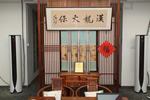






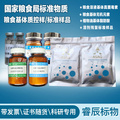
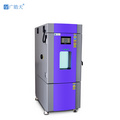

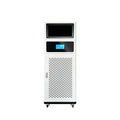
![聚酰胺粉 [柱层析用,高分离性能] 60-100目/80-120目/100-200目](https://p-06.caigou.com.cn/135x120/2024/7/2024071513085253637.jpg)
